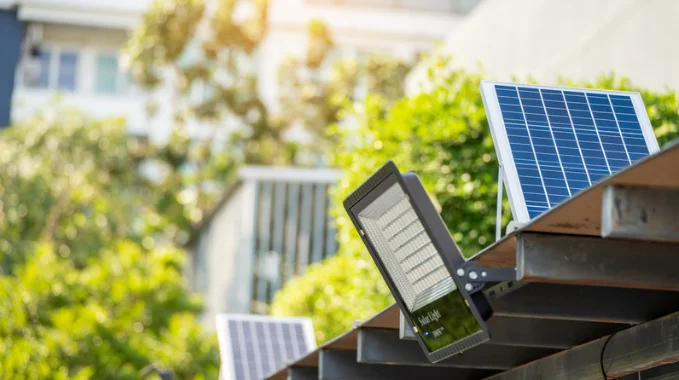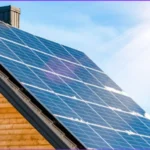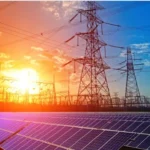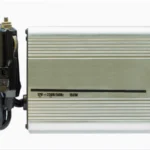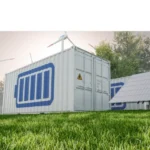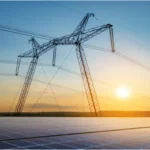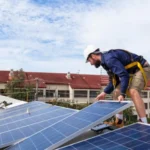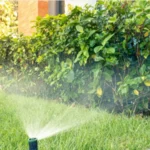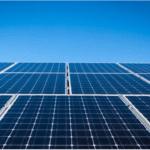You’ve invested in sleek solar outdoor lights to illuminate your garden path or backyard, expecting free and effortless lighting powered by the sun. But after just a few weeks, they seem dimmer than expected, or worse, they don’t turn on at all.
If that sounds familiar, you’re not alone. Many homeowners assume that solar systems are maintenance-free. In reality, even outdoor lights and basic rooftop systems need proper care and smart usage to perform at their best.
This guide will help you understand how to optimize your solar setup, from outdoor lights to EV chargers and full off-grid systems. Whether you’re just getting started or looking to fine-tune an existing system, you’ll find practical, actionable tips grounded in real-world experience.
Also click here : Energy storage solution.

How Solar Outdoor Lights Actually Work
Solar lights are self-contained units that include a small solar panel, a rechargeable battery, an LED light, and a light sensor. During daylight, the panel charges the battery. When night falls, the light sensor triggers the LED to turn on.
However, performance varies based on a few key factors:
- Shading from trees or buildings can reduce charging efficiency.
- Dust or bird droppings on the solar panel can significantly reduce energy capture.
- Battery degradation over time results in shorter lighting durations.
- Proximity to artificial lighting can confuse the sensor, preventing it from turning on.
Stat to Know: According to a 2022 report from the National Renewable Energy Laboratory (NREL), even a thin film of dust can reduce solar panel output by 7 to 20 percent, depending on environmental conditions.
What You Can Do: Clean the surface of your solar outdoor lights at least once a month. Use a soft cloth and water, avoiding harsh chemicals or abrasive materials. Also, make sure the lights receive at least 6 to 8 hours of direct sunlight daily.
The Hidden Cost of Dirty Solar Panels
Cleaning isn’t just for outdoor lights. Full-size rooftop panels are also vulnerable to performance loss due to dust, leaves, bird droppings, and air pollution.
Why Clean Panels Matter
- Output Reduction: Dirty panels can lose anywhere from 5% to 25% of their efficiency.
- Hotspots and Damage: Dirt buildup can cause uneven heating, reducing panel lifespan.
- Financial Impact: A typical 6kW system might lose 1,000 kWh annually if not cleaned regularly. That’s about $120 to $180 lost, depending on your local energy rate.
Real-Life Story: One homeowner I worked with in Modesto, California, contacted us after noticing a decline in their solar production. The monitoring app showed consistent underperformance. Upon inspection, we found pollen and grime from nearby orchards coating the panels. After a professional cleaning, their production increased by 17 percent the very next day.
DIY Cleaning Tips
- Inspect your panels every 2 to 3 months.
- Use a garden hose and soft sponge or cloth. Avoid pressure washers.
- Clean early in the morning or late afternoon to avoid thermal stress.

How to Maintain Your Solar Battery System
If your home includes a solar battery, proper maintenance can make the difference between smooth operation and costly failures.
Best Practices for Solar Batteries
- Temperature Control: Batteries should be kept in shaded or climate-controlled areas. Exposure to high heat can reduce battery life by 30-40%.
- Avoid Full Discharges: Try to keep charge levels between 20% and 80%. Frequent full discharges shorten lifespan.
- Regular Monitoring: Utilize your battery management app to monitor battery health, temperature, and firmware updates.
Tip from the Field: I once consulted for a family near Sacramento whose Tesla Powerwall never seemed to reach a full charge. After some troubleshooting, we found the firmware hadn’t auto-updated due to a weak Wi-Fi signal in the garage. A manual update restored normal function.
Also visit this page : Egrowatt products.
Inverter Issues: What to Watch For
Your solar inverter is the control center of your system. It converts DC energy from the panels into AC power for your home. When something goes wrong, the inverter is often where you’ll first notice it.
Common Inverter Problems
- No Power or Error Codes: May be caused by tripped breakers, damaged wiring, or internal inverter issues.
- Low Energy Output: This could be a problem with the panel or a faulty string connection.
- Inconsistent Performance: Often linked to partial shading or software issues.
How to Troubleshoot
- Look for any warning lights or error codes on the inverter display.
- Check your app to identify production drops.
- Make sure the breaker is in the correct position.
- Scan the roof for new shading from growing trees or seasonal sun angles.
If you’re unsure, contact your solar installer. Inverters can be complex and should be serviced by certified technicians.

Charging Your EV with Home Solar
With more electric vehicles on the road, homeowners are wondering whether they can charge their EVs entirely with solar energy. The answer is yes but it takes planning.
Key Considerations
- Charger Type: Level 2 chargers (240V) are ideal for home use, offering about 25 to 30 miles of range per hour.
- Energy Load: Charging an EV can increase your daily electricity use by 10 to 15 kWh. Ensure your system is sized to handle the increased load.
- Smart Integration: Select a charger that syncs with your solar production to minimize grid reliance.
Installer Insight: A client in San Diego installed a Wallbox Pulsar Plus with solar sync. By programming the charger to operate only during peak solar production hours, they now charge their EV at zero grid cost on most days of the week.
Placement Matters: Positioning Solar Lights for Best Results
If you’ve installed solar outdoor lights but they’re underperforming, placement may be to blame.
Best Placement Practices
- Face the solar panel toward the sun (generally south in the northern hemisphere).
- Avoid areas shaded by trees, walls, or fences.
- Install the lights away from streetlamps or porch lights to prevent the sensor from malfunctioning.
- Tilt the panel slightly if possible to improve exposure based on your geographic location.
A common mistake is installing solar lights in shaded areas, such as flower beds or next to north-facing walls. They may look decorative, but won’t perform well unless they get direct sunlight for most of the day.
Considering Off-Grid Solar? Read This First
Going off-grid is appealing for many reasons, including freedom from utility companies, energy independence, and living in remote areas. But it’s not a decision to take lightly.
Pros of Off-Grid Systems
- No electricity bills
- Reliable power in remote areas
- Independence from utility rate hikes
Cons to Consider
- Upfront cost can range from $30,000 to $70,000 or more
- Requires precise energy management, especially in winter
- Maintenance responsibilities fall entirely on the homeowner
Off-grid setups are ideal for cabins, tiny homes, or areas with unreliable grid service. But for most suburban homes, a grid-tied system with battery backup offers better long-term value and flexibility.

Get the Most from Your Solar Investment
From solar outdoor lights to full rooftop systems, your solar technology is only as effective as its setup and maintenance. Regular attention, including cleaning panels, checking batteries, and updating firmware, can increase energy output, extend system lifespan, and improve your return on investment.
If your panels haven’t been cleaned in over 3 months, or your solar lights seem dimmer than usual, it may be time for a system checkup. A quick inspection could help you recover up to 20 percent of your system’s performance.
Contact your installer or schedule a professional evaluation to keep your system running at peak efficiency.
FAQs: Solar Outdoor Lights and Home Solar Maintenance
Q: Why do my solar lights only stay on for a few hours at night?
A: They may not be receiving enough sunlight during the day. Clean the panel and reposition the light to a sunnier location.
Q: How often should I clean my solar panels?
A: Every 2 to 3 months, or more often in dusty areas. Regular cleaning helps maintain optimal performance and prolongs the life of the panel.
Q: Are solar batteries worth it if I already have net metering?
A: Not always. If your utility offers full net metering and you don’t experience frequent power outages, you may not need a separate meter.
Q: Can I monitor my system performance easily?
A: Yes. Most modern inverters and batteries come with apps that show real-time performance, errors, and energy usage.
Q: What’s the typical lifespan of solar outdoor lights?
A: Most last between 2 to 5 years, depending on battery quality and exposure to the elements.

